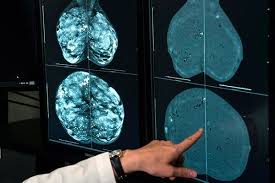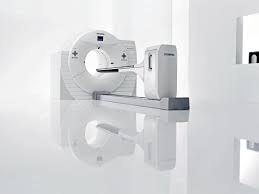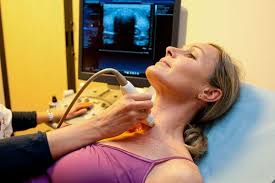In emergency medicine, rapid diagnosis is key to saving lives. Radiology has changed how doctors care for patients in emergency settings.
Thanks to new imaging tech, radiologists can quickly spot serious conditions. This helps improve patient care. Radiology is very important in emergency medicine.
It helps doctors make fast and accurate diagnoses. This leads to better care and outcomes for patients.
The Critical Role of Medical Imaging in Emergency Care
Medical imaging is key in emergency care. It helps doctors make fast decisions that greatly affect patient results. Quick and accurate diagnoses from imaging are vital in emergency situations.
First Minutes Matter: How Quick Imaging Decisions Impact Patient Outcomes
The first minutes after a patient arrives at the emergency department are very important. Fast imaging choices can greatly change patient results. It’s critical to have quick imaging plans in place.
- Rapid assessment of injuries or conditions
- Timely intervention to prevent further complications
- Improved patient outcomes through swift diagnosis
The Evolution of Emergency Imaging Protocols
Emergency imaging protocols have changed a lot over time. They now use new technologies and methods to better diagnose. New imaging tools have made it easier to quickly and accurately find conditions.
Key advancements include:
- Improved image resolution
- Faster scanning times
- Enhanced diagnostic capabilities
Canadian Emergency Departments: Imaging Utilization Patterns
In Canadian emergency departments, certain imaging use patterns have been noticed and studied. Knowing these patterns helps make imaging plans better and improve patient care.
Understanding Emergency Radiology: Core Principles and Practices
Knowing the basics of emergency radiology is key for healthcare pros to give top-notch care. This field is all about imaging in emergency situations, where time is of the essence. It’s a specialized area that demands a solid grasp of its core principles and practices.
It deals with imaging in emergency settings, where the stakes are high and quick decisions are needed. The field has grown to tackle the unique hurdles of emergency care. This includes the need for fast diagnosis and the challenges of working under pressure.
Defining the Specialty of Emergency Radiology
Emergency radiology is a unique part of radiology, focused on acute conditions. It needs a mix of technical skills, clinical knowledge, and decision-making abilities.
Radiologists in emergency settings must quickly and accurately read complex images, often with little clinical info.

Radiology in Emergency Medicine: Rapid Diagnosis Saves Lives
The Unique Challenges of Imaging in Emergency Settings
Imaging in emergency settings comes with its own set of challenges. These include the need for fast diagnosis, limited patient info, and high-stakes decisions.
Radiologists must navigate these environments well. They need to balance speed with accuracy.
Balancing Speed and Accuracy in Critical Situations
In emergency radiology, it’s vital to balance speed and accuracy. Radiologists must quickly interpret images while ensuring their interpretations are accurate and dependable.
This calls for a deep understanding of imaging modalities and the clinical context they’re used in.
Essential Imaging Modalities in the Emergency Department
In emergency medicine, picking the right imaging tool is key for quick diagnosis and treatment. The emergency department uses different imaging technologies to check patients fast and right.
X-ray: The Frontline Tool for Emergency Assessment
X-ray is often the first choice for initial checks because it’s widely available and gives quick results. It’s great for spotting fractures, finding foreign objects, and some lung issues. The speed and easy access of X-ray make it a must-have in emergencies.
Computed Tomography (CT): Detailed Insights in Minutes
Computed Tomography (CT) scans give detailed images of the body, helping diagnose complex issues. CT scans are key in trauma cases to spot internal injuries fast. The clear images from CT scans help doctors make quick decisions.
Ultrasound: Rapid Bedside Evaluation Capabilities
Ultrasound is great for quick bedside checks, helping make fast decisions. It’s used for checking abdominal pain, finding gallstones, and guiding procedures. Ultrasound’s portability and non-invasive nature make it perfect for emergencies.
MRI: When and Why It’s Used in Emergency Settings
MRI is not as common in emergencies because of its longer scan times and limited availability. But, it’s useful for diagnosing spinal cord injuries or certain brain conditions. MRI’s ability to see soft tissues makes it valuable in some emergency cases.
The choice of imaging tool in the emergency department depends on the situation, patient’s condition, and need for quick diagnosis. Knowing the strengths and weaknesses of each is key for the best patient care.
- X-ray for initial assessments and fractures
- CT for detailed insights and complex conditions
- Ultrasound for rapid bedside evaluations
- MRI for specific conditions requiring high soft tissue sensitivity
Trauma Imaging: When Seconds Count
When trauma happens, radiology plays a key role in saving lives. It does this by quickly diagnosing through imaging. The speed and accuracy of these results can mean the difference between life and death.
The Golden Hour: Optimizing Imaging Workflows in Trauma
The “golden hour” is a critical time in trauma care. It’s the first hour after an injury. Optimizing imaging workflows during this time is vital. It helps find injuries and start the right treatment fast.
Whole-Body CT Scanning in Multi-System Trauma
Whole-body CT scanning is a big help in multi-system trauma. It lets doctors check for injuries all over the body. This helps them focus on the most urgent treatments and can save lives.
Detecting Life-Threatening Injuries: Brain, Chest, and Abdominal Trauma
Injuries to the brain, chest, and abdomen are very serious. Radiology is key in quickly spotting these injuries. This allows for quick action to save lives.
Case Study: How Rapid CT Saved a Multi-Trauma Patient
A multi-trauma patient was rushed to the emergency room. Quick CT scans helped doctors find and treat critical injuries fast. This saved the patient’s life.
In summary, trauma imaging is essential in emergency care. It helps diagnose and treat injuries quickly. This can greatly improve patient outcomes. Advanced imaging and efficient workflows are key to saving lives and helping patients recover.
Stroke Care Revolution: How Radiology Changed the Game
In emergency medicine, radiology is key in stroke care. The saying “time is brain” shows how fast we need to act in stroke cases.
Time is Brain: The Critical Role of Rapid Imaging in Stroke
Rapid imaging is vital in stroke care. It lets doctors quickly see the stroke’s type and size. This info is key for choosing the right treatment.
CT Perfusion and Angiography in Acute Stroke Management
CT perfusion and angiography are now essential in managing acute strokes. They give detailed views of blood flow in the brain. This helps find the best places for treatment.
Extending the Treatment Window: How Advanced Imaging Makes It Possible
Advanced imaging has changed stroke care by giving more time for treatment. It lets doctors make better choices, even when time is running out.
Success Stories: Patients Saved by Timely Stroke Imaging
Many patients have been saved thanks to quick stroke imaging. These stories show how important fast and accurate imaging is in emergencies.
Chest Pain and Cardiac Emergencies: Imaging Decision Pathways
Effective imaging decision pathways are key for patients with chest pain and cardiac emergencies. It’s vital to quickly and accurately diagnose life-threatening conditions in emergency medicine.
Ruling Out Life-Threatening Conditions: Aortic Dissection and Pulmonary Embolism
When chest pain occurs, it’s important to rule out severe conditions like aortic dissection and pulmonary embolism. Imaging techniques are essential for diagnosing these conditions. For example, CT angiography is great for finding aortic dissections. A CT pulmonary angiogram is used to spot pulmonary embolisms.
Cardiac CT in the Emergency Setting
Cardiac CT is a valuable tool in emergencies. It gives detailed images of the heart and its vessels. It helps check for coronary artery disease, find cardiac anomalies, and look at the heart’s structure and function.
Radiation Dose Considerations in Cardiac Imaging
Cardiac imaging, like CT scans, is critical but we must think about radiation dose. It’s important to lower radiation exposure to prevent harm. Using dose modulation and the lowest necessary dose for images is becoming more common.
By improving imaging decision pathways and watching radiation exposure, healthcare providers can better care for patients in cardiac emergencies.
Pediatric Emergency Radiology: Special Considerations
Emergency radiology for kids is different because of their growing bodies and the need for safe radiation use.
Child-Specific Imaging Protocols and Radiation Safety
Imaging for kids needs special settings based on their size and age. Radiation safety is key. Protocols must reduce exposure while keeping images clear.
Non-Accidental Trauma: The Radiologist’s Role in Detection
Radiologists are vital in spotting non-accidental trauma in kids. Signs like different healing stages of fractures can show abuse.
Common Pediatric Emergencies and Their Imaging Findings
Common emergencies in kids include appendicitis, intussusception, and fractures. Knowing the usual imaging signs for these is essential for quick and correct diagnosis.
In summary, pediatric emergency radiology needs a careful approach. It must balance finding the right diagnosis with keeping radiation use safe.
The Expertise Behind Emergency Radiology: Training and Skills
Expertise in emergency radiology comes from deep education and ongoing learning. Emergency radiologists need specialized training to handle imaging in urgent situations.
Specialized Training for Emergency Radiologists
Emergency radiologists get a lot of education and training. This includes:
- Completing a residency program in radiology
- Participating in fellowship programs focused on emergency radiology
- Engaging in continuous professional development to stay updated with the latest imaging techniques and technologies
The Canadian Perspective: Education and Certification
In Canada, radiologists must meet certain education and certification standards. This involves:
- Obtaining a medical degree from an accredited institution
- Completing a radiology residency program approved by the Royal College of Physicians and Surgeons of Canada
- Obtaining certification in radiology from the Royal College
Continuous Learning in a Rapidly Evolving Field
The field of emergency radiology keeps changing, with new tech and methods coming out all the time. To keep up, radiologists must keep learning, including:
- Attending conferences and workshops focused on emergency radiology
- Participating in online courses and webinars
- Engaging in peer review and quality improvement initiatives
By combining initial training with ongoing education, emergency radiologists can offer top care in emergency medicine.
Technological Innovations Transforming Emergency Radiology
Technological advancements are changing emergency radiology for the better. They make patient care faster and more accurate. This leads to better health outcomes for patients.
Artificial Intelligence Applications in Emergency Imaging
Artificial intelligence (AI) is now a big part of emergency imaging. AI helps spot problems and sort out urgent cases. It also helps doctors make more precise diagnoses.
Point-of-Care Ultrasound: Bringing Imaging to the Bedside
Point-of-care ultrasound (POCUS) is key in emergency rooms. It lets doctors do ultrasound tests right at the patient’s side. This speeds up decision-making and improves care.
Advanced Visualization Tools for Faster Interpretation
Advanced tools are making it easier to understand radiology images. These tools improve image quality and give more detailed info.
3D Reconstruction Techniques
3D reconstruction techniques create detailed 3D images from radiology data. They’re very helpful in complex cases, like trauma or surgery planning.
Dual-Energy CT Applications
Dual-energy CT makes CT scans even better. It helps identify different tissues and materials, making diagnoses more accurate.
These new technologies are making emergency radiology better. They help doctors provide faster and more effective care. As technology keeps improving, we’ll see even more exciting advancements.
Overcoming Challenges in Modern Radiology for Emergency Care
Modern radiology in emergency settings faces many challenges. It must provide timely and effective care. Radiology is key in emergency medicine, but it struggles to deliver top-notch services.
Managing High Patient Volumes and Prioritization
Emergency departments see a lot of patients. It’s important to quickly sort out who needs help the most. Efficient triage systems help make sure urgent cases get attention fast.
- Implementing advanced triage protocols
- Utilizing AI for preliminary assessments
- Streamlining workflows to reduce wait times
Radiation Dose Optimization Strategies
Reducing radiation doses is key to keeping patients safe. In emergencies, quick diagnosis is vital. Strategies include:
- Using low-dose protocols for common examinations
- Implementing dose management software
- Training staff on dose optimization techniques
Addressing Disparities in Access to Advanced Imaging
Not everyone has access to advanced imaging. This affects patient care. Efforts to fix this include:
- Upgrading imaging equipment in underserved areas
- Implementing teleradiology services
- Promoting education and training for healthcare professionals
Canadian Healthcare System: Unique Challenges and Solutions
The Canadian healthcare system has its own challenges. One is unequal access to healthcare. Solutions include:
- Standardizing emergency radiology protocols nationwide
- Investing in telemedicine and remote imaging services
- Enhancing training programs for radiologists and technicians
Conclusion: The Future of Emergency Radiology and Patient Care
The future of emergency radiology looks bright. New technologies will make imaging better, helping patients more. Radiology’s role in emergency care will grow, improving patient outcomes.
Artificial intelligence and advanced tools will change how radiology works. They will make diagnoses more accurate and care better. The Canadian healthcare system will face challenges, but these tools can help.
It’s key to keep training radiology professionals. They need to know how to use new tech. This way, emergency radiology can keep delivering top-notch care.
FAQ
What is the role of radiology in emergency medicine?
Radiology is key in emergency medicine. It helps diagnose quickly and saves lives. This is done through medical imaging technologies.
What are the most common imaging modalities used in emergency departments?
In emergency departments, common imaging tools include X-ray, CT, Ultrasound, and MRI.
How does radiology contribute to stroke care?
Radiology has changed stroke care a lot. It allows for fast imaging. This is vital for quick treatment, thanks to CT perfusion and angiography.
What are the unique challenges faced by radiologists in emergency settings?
Radiologists in emergencies face big challenges. They must be fast but also accurate. They need special training and skills for high-pressure situations.
How is pediatric emergency radiology different from adult emergency radiology?
Pediatric emergency radiology is different. It focuses on child safety and uses special imaging. It also looks for signs of abuse.
What technological innovations are transforming emergency radiology?
New tech is changing emergency radiology. This includes AI, ultrasound, advanced tools, 3D images, and dual-energy CT.
How is radiation dose optimized in emergency imaging?
Minimizing radiation risk is key in emergency imaging. This is done with child-safe protocols and choosing the right imaging.
What is the significance of the “golden hour” in trauma imaging?
The “golden hour” is very important in trauma care. It highlights the need for fast imaging. Quick diagnosis and treatment can save lives.









